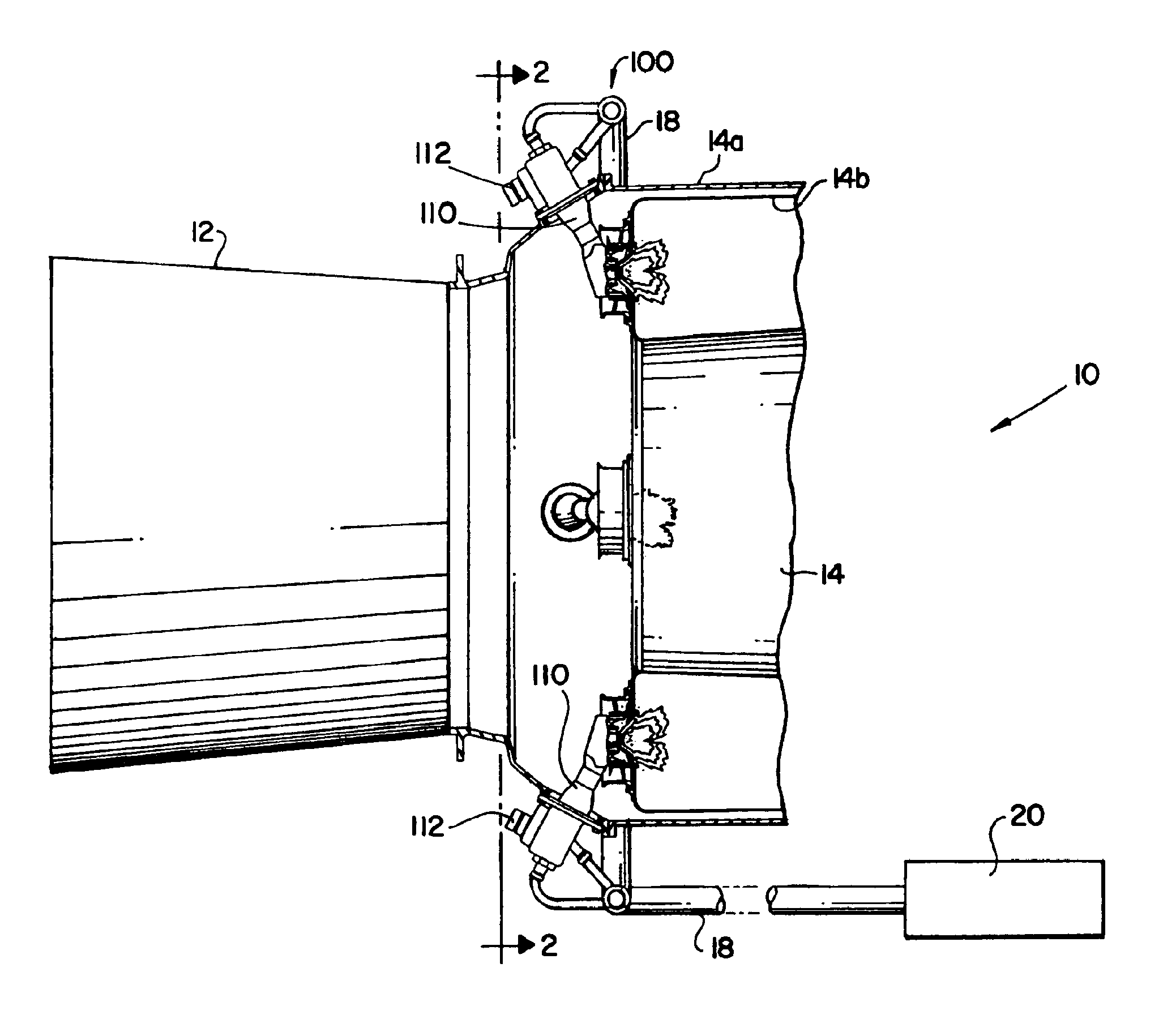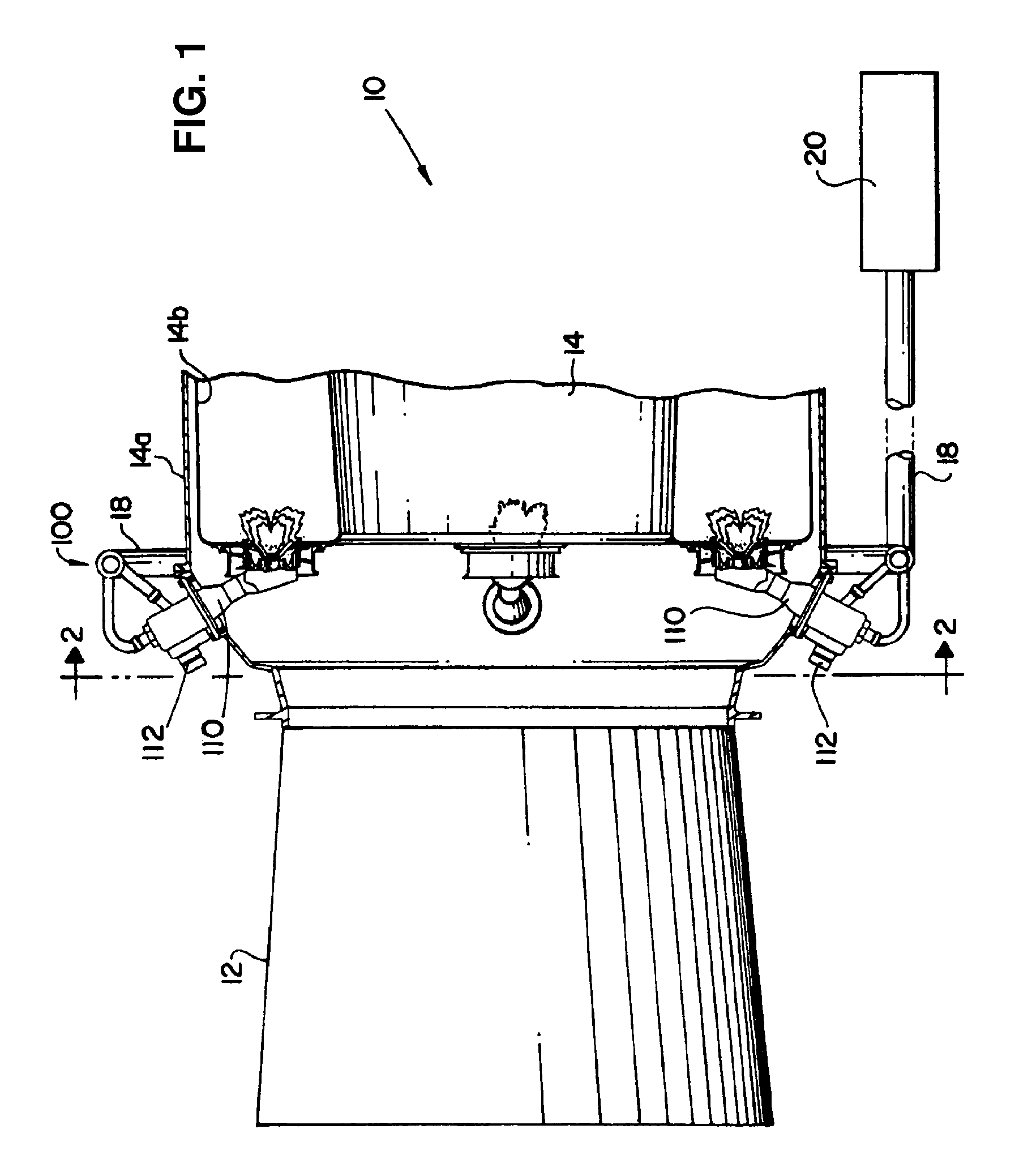Variable amplitude double binary valve system for active fuel control
a valve system and variable amplitude technology, applied in the direction of turbine/propulsion fuel valves, machines/engines, lighting and heating apparatus, etc., can solve the problems of inability to control passively, inability to maintain combustion, and high cost of passive controls, so as to reduce the size, weight, complexity and cost of high-speed valves
- Summary
- Abstract
- Description
- Claims
- Application Information
AI Technical Summary
Benefits of technology
Problems solved by technology
Method used
Image
Examples
Embodiment Construction
[0037]The subject systems and related methods are particularly useful in conjunction with active combustion control systems, such as those described in U.S. Patent Publication Number 2007 / 0119147 to Cornwell et al., for example, which application is hereby incorporated by reference in its entirety. Preferably, such active combustion control systems are designed to reduce localized thermo-acoustic combustion instabilities within the combustion chamber of a gas turbine engine. In such instances, the valve assemblies disclosed herein can be employed to pulsate or otherwise modulate fuel flow to individual fuel injectors at extremely high frequencies in excess of about 1000 Hz in proportion to detected combustion instability, while providing a wide range of adjustable amplitude and effective frequency of such fuel pulsations. The pulsating portion of valves in accordance with the present invention can be any suitable pulsating valve, but in accordance with a preferred aspect of the inve...
PUM
 Login to View More
Login to View More Abstract
Description
Claims
Application Information
 Login to View More
Login to View More - R&D
- Intellectual Property
- Life Sciences
- Materials
- Tech Scout
- Unparalleled Data Quality
- Higher Quality Content
- 60% Fewer Hallucinations
Browse by: Latest US Patents, China's latest patents, Technical Efficacy Thesaurus, Application Domain, Technology Topic, Popular Technical Reports.
© 2025 PatSnap. All rights reserved.Legal|Privacy policy|Modern Slavery Act Transparency Statement|Sitemap|About US| Contact US: help@patsnap.com



